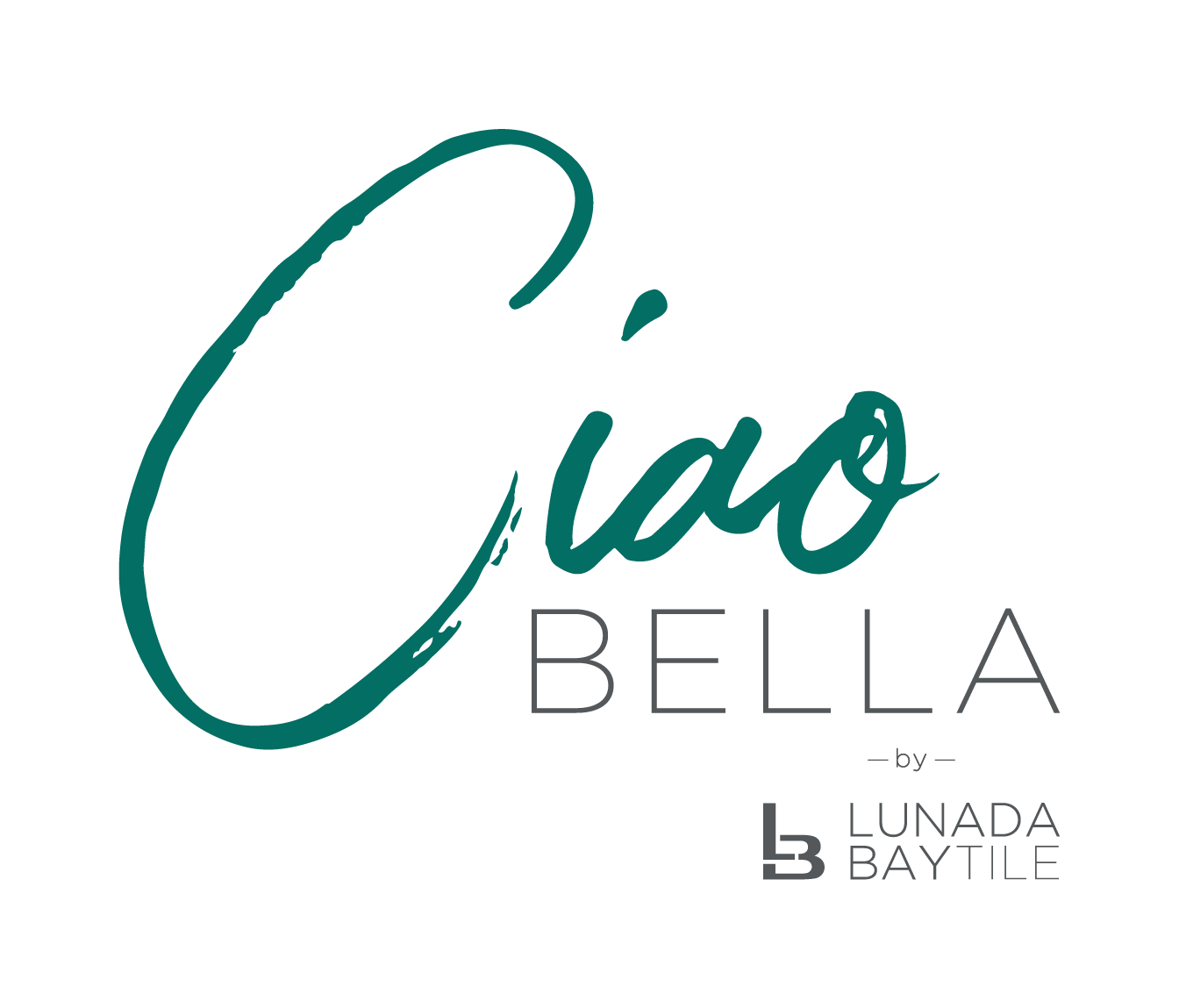Need help?
Frequently Asked Questions
PURCHASING / ORDERS
Cancellations are possible within 24 hours of placing your order. Contact us to request your cancellation.
All Ciao Bella Tile are manufactured in lots (or batches). Since all our tile are handmade, one lot may differ slightly from another lot. Please keep in mind there may be some variation between tile across different lots.
Yes, we accept returns. Please contact our Support Team and we will help coordinate your return. Buyers are responsible for the cost of shipping the material back to us.
Orders usually ship within 5 business days.
Current stock levels of each item are shown on the individual product pages. Ciao Bella tile have limited inventory that is only available while supplies last.
All orders ship from our warehouse in Harbor City in Southern California.
Yes, it is recommended to review a physical sample or swatch card before purchase. Our products often have colors and/or textures that vary significantly between tiles, and photos seen on differing screens may not be fully representative of the true color. Get up to 5 free samples when subscribe to our newsletter; shoppers who order more than 5 free samples will have their order cancelled. Sample orders are only accepted in the continental US.
Sample orders usually ship within 3 – 5 business days.
ISSUES
- All or part of my order arrived damaged?
- The wrong material arrived?
- There’s an issue with the tile I received?
- My order hasn’t arrived or is lost?
- What do I do if I have a complaint?
We take pride in securely packaging your order, but sometimes things happen during shipping. Document and photograph the issue, including photographs of the box labels and box contents. Contact us to explain and initiate your claim. Be sure to include your email/username and order number. Be prepared to send photographs and other documentation highlighting the issues.
All responses should arrive within 1 – 2 business days. Please be sure to check your Junk Email box, if not seen.
TECHNICAL QUESTIONS
(0:05) How do I finish the outside edge of corners?
(0:25) I have tile falling off the wall. Is there a problem with my tile?
(0:43) My saw keeps shattering glass tiles when I cut them. What do you recommend?
(1:01) Paper face glass mosaics fall apart when I cut them on my wet saw. What do you recommend?
(1:21) Is installation of glass tile different than installation of porcelain or ceramic tile?
(1:46) Is knocking down the trowel marks necessary, and why?
(2:04) How do you get rid of trowel marks after installation?
(2:23) Does Lunada Bay Tile recommend using grout release?
(2:47) The back of glass tiles have deep divots that show when installed. How do I hide them?
(3:30) Can you use epoxy grout with glass tile?
Yes, please refer to the Ciao Bella Installation Guide.
Yes, please refer to the Ciao Bella Warranty.
There are several ways to finish 90° angles, edges and corners. Consider using our glass Quarter Round products, or our bars and liners. You may also want to consider any of the offered edge treatments that are available on the market today. Skilled tile technicians may also miter the tiles.
There is absolutely no problem with your tile. 99% of the time, tile falling off the wall is a delamination issue which involves the setting material or installation. The first course of action should be a call to the setting material manufacturer of the product used to adhere the tile to the substrate. All tile is dependent on a proper bond to the substrate. Loss of bond is a function of the setting material in most cases.
If your tile saw is shattering the glass during cutting, the most likely cause is that you need to use a high-quality, continuous-rim glass diamond blade.
For our detailed recommendation, watch our instructional video: How to Cut Paper Face Glass Mosaics on a Wet Saw.
There’s one significant difference in our opinion. It would be best to use the “Key, Notch, and Flatten” technique when installing glass tiles, not porcelain or ceramic. Please refer to our online video for basic glass tile install installation.
With glass tile, it is essential to always Key, Notch, and Flatten. Knocking down the trowel marks will give you the maximum coverage to the back of the tile.
Unfortunately, nothing can be done post-installation to cure this problem. Remember, always “Key, Notch, and Flatten.”
Quick Pro-tip here: We do not recommend using grout release. If you do not remove all the residual adhesive from the top of the glass prior to grouting, the leftover adhesive on the top of the glass provides a perfect grout release.
Not all, but a few glass tiles will have a void or divot in the back of the tile. This is due to the handmade, artistic nature of our glass. There’s no way to hide this completely, but a proper back-buttering technique to fill the voids before installation will do the job.
Yes, epoxy grout can be used with glass tile. However, we strongly recommend keeping epoxy grout for indoor use and not outdoors. For outdoor use, please use standard sanded grout.
Yes. There are a lot of benefits to using sanded over unsanded grout. Sanded grout is more durable and more resistant to cracking, bonds better and shrinks less. It is also stronger and performs better in submerged and intermittent wet/dry areas. Unsanded grout is best when you have a very small grout joint under a 1 /16th and under and 1/8th of an inch.
For our glass tiles, and most of our ceramics, grout haze remover is not too harsh. However, with any of our glass with silk finishes, or ceramics with reactive glazes, grout remover is not recommended.
All tiles expand and contract because of atmospheric conditions, exposure to the sun, and direct UV exposure. Some larger tile sizes, or larger format tiles, are not acceptable for use in an exterior environment because the expansion in these applications will cause them to crack.
Yes, absolutely. Lunada Bay Tile cast glass tiles are an excellent option for the exterior of any fire pit. However, it should never be placed in conjunction or near the burner, or be used as fire glass.
It comes down to a simple theorem – the larger the tile, the greater the mass AND the greater the mass, the greater the expansion and contraction of the tile because of exposure to the sun, direct UV exposure and other atmospheric conditions. The other way to think about this is – the smaller the tile, the less the expansion and contraction and, consequently, the safer the tile in an exterior submerged environment. Our size requirement recommendations are based on limiting the amount a tile may expand and contract. Please note, we classify submerged applications and water features in the same usage category. However, showers are not in this same category because the space is intermittently wet/dry.
Yes, our tiles that qualify for submerged applications can be used in a salt or saline pool.
Light traffic residential is much like a powder room or bathroom floor, and NOT entryways, high traffic areas, and hallways – or any location where there’s dirt and debris tracked in from outside.
Absolutely, translucent or transparent glass can be used on a shower floor. However, it is critical to follow proper installation procedures. Discoloration of the substrate directly below the tile is NOT a tile issue; the issue is more likely a methods or materials problem. See our Installation guide for more information.

